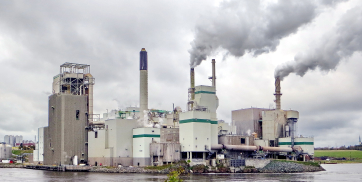Reconciliation has gained traction in the context of methane emissions within the oil and gas industry, stemming from the growing recognition that different studies and estimation approaches often yield different results. Such disparities can be attributed to the diverse methods employed for estimating greenhouse gas emissions, which may involve emissions factors, direct measurements, or engineering equations applied across various spatial and temporal scales. In our Highwood Glossary, we define reconciliation as the exploration of the reasons behind these variations, including efforts to harmonize disparate estimates into combined estimates that are more robust.
However, the term “reconciliation” has evolved to encompass a broad array of meanings in this context. This ambiguity can lead to confusion and potentially undermine efforts to address methane emissions effectively. It is important for stakeholders to be precise in their usage of the term, as failure to do so risks trivializing the complexities involved in comparing and combining diverse emissions estimates. As reconciliation becomes more ingrained in industry practices, clarity and specificity are crucial to ensuring that it serves its intended purpose without adding unnecessary noise to the conversation.
Section 1: The evolving reconciliation landscape
In response to the pressing need for accurate methane emissions data, a growing number of regulations and voluntary initiatives are beginning to require—or indicate that they will soon require—reconciliation. These requirements are part of a broader movement towards Measurement-informed inventories (MIIs), where company-specific data are replacing generic estimates. Despite the initial confusion and complexity surrounding MIIs, it is evident that they are here to stay. The future of methane emissions management will likely involve scaling MIIs across numerous operated and non-operated business units (BUs), each with varying levels of expertise and capacity.
To ensure the success of these efforts, consistency and accessibility are paramount. The complexity of reconciling methane emissions data across different business units, each potentially requiring different technologies and considerations, demands a standardized and systematic approach. Furthermore, MIIs must be auditable to a level of reasonable assurance, as required by frameworks such as the European Union import regulations and various sustainability reporting standards. Transparent and methodical implementation processes are needed to eliminate ambiguity, explicitly define assumptions and interpretations, and provide a clear audit trail. Without such rigor, the integrity of reconciled methane emissions data could be compromised, undermining the very purpose of reconciliation.
Section 2: Don’t fall victim to the allure of oversimplification
As reconciliation becomes more prominent, an emerging trend is the use of the term as a selling feature by solution providers, who may gloss over the significant complexities involved. However, most existing standards are silent on the critical details of reconciliation, such as the assumptions and interpretations regarding data processing, the extrapolation of measurements, the incorporation of estimates below detection thresholds, and the credible estimation of uncertainty. The result is that replicability and reproducibility remain elusive. For example, two individuals applying the same reconciliation standard to the same dataset could arrive at vastly different conclusions.
Reconciliation is not a process that can be distilled into a “one-click” solution. It requires deep subject matter expertise, particularly in understanding measurement data, underlying inventories, statistical methodologies, and extrapolation techniques. While automation can play a role in streamlining certain aspects, the involvement of specialists who comprehend the intricacies of the data is indispensable. As we continue to advance in this field, expectations from consumers of reconciled datasets will likely evolve, demanding greater accuracy and transparency. It is crucial to embrace the inherent complexity of reconciliation rather than oversimplify it, while also leveraging technology to automate and manage this complexity effectively.
At Highwood, we’re operationalizing reconciliation
Highwood stands at the forefront of the reconciliation landscape, with some of the world’s leading experts working to operationalize and scale the research emerging from the scientific domain. Our consultants and Emissions Intelligence Platform ensure that reconciliation is done right, and have supported a wide range of international oil and gas companies in their efforts to reconcile methane emissions data across diverse technologies and standards.
To achieve effective reconciliation, Highwood’s approach involves several key strategies. First, we consider available standards and relevant academic research to ensure defensibility. Second, we leverage technology to maximize the usability, scalability, and consistency of our reconciliation processes. Third, we prioritize practical approaches that avoid systematic bias, ensuring that MIIs are both accurate and reliable. Finally, we incorporate diverse perspectives, drawing insights from our internal experts and beyond, to inform our decisions with a well-rounded understanding of the issues at hand. Whenever possible, we use real-world data to support our decisions, ensuring that our reconciliation efforts are grounded in empirical evidence.
As reconciliation becomes a buzzword in the methane emissions discourse, we must not lose sight of its true purpose and complexity. By approaching reconciliation with rigor, transparency, automation, and scalability, we can ensure that it serves as a powerful tool in enabling energy companies to track progress and prove achievement of strong methane performance.






